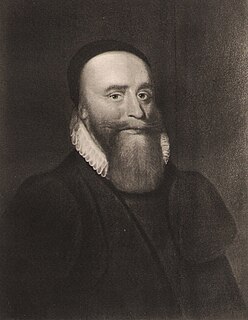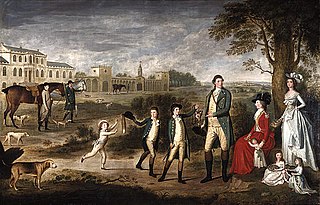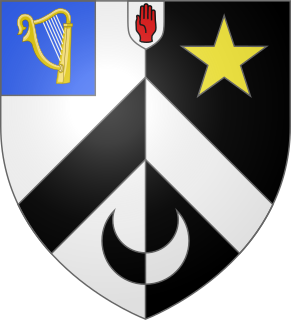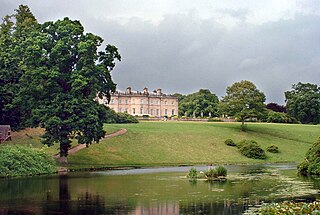
Earl of Rosslyn is a title in the Peerage of the United Kingdom. It was created in 1801 for Alexander Wedderburn, 1st Baron Loughborough, Lord Chancellor from 1793 to 1801, with special remainder to his nephew Sir James St Clair-Erskine, as Wedderburn had no surviving issue of his own. Wedderburn had already been created Baron Loughborough, of Loughborough in the County of Leicester, in the Peerage of Great Britain in 1780, with normal remainder to the heirs male of his body, and Baron Loughborough, of Loughborough in the County of Surrey, in the Peerage of Great Britain in 1795, with the same remainder as the earldom. The 1780 barony became extinct upon his death, but the 1795 barony and the earldom passed, by the special remainder, to his nephew, who thus became the second Earl of Rosslyn. The second Earl was a Lieutenant-General in the Army and also held political office as Lord Privy Seal and Lord President of the Council.

Viscount Thurso, of Ulbster in the County of Caithness, is a title in the Peerage of the United Kingdom. It was created on 11 June 1952 for the Scottish Liberal politician and former Secretary of State for Air, Sir Archibald Sinclair, 4th Baronet. His son, the second Viscount, served as Lord Lieutenant of Caithness from 1973 to 1995. As of 2016 the titles are held by the latter's son, the third Viscount, who succeeded in 1995. Known as John Thurso, he is a Liberal Democrat politician. Thurso lost his seat in the House of Lords after the passing of the House of Lords Act 1999. However, he was elected to the House of Commons in 2001, thereby becoming the first hereditary peer of the United Kingdom allowed to sit in the Commons without first disclaiming his title, he held his seat until his defeat in the 2015 general election. On 19 April 2016, he re-entered the Lords following his election by the remaining Liberal Democrat hereditary peers after the death of Lord Avebury. The third Viscount also became Lord Lieutenant of Caithness in 2017.

There have been two baronetcies created for persons with the surname Burnett, one in the Baronetage of Nova Scotia and one in the Baronetage of the United Kingdom. As of 2010 one creation is extant while one is dormant.

There have been five baronetcies of the United Kingdom created for a person with the surname Erskine, two in the Baronetage of Nova Scotia, one in the Baronetage of Great Britain and two in the Baronetage of the United Kingdom. Two of the creations are extant as of 2010.

The Alexander, later Cable-Alexander Baronetcy, of the City of Dublin, is a title in the Baronetage of the United Kingdom. It was created on 11 December 1809 for William Alexander, Lord Mayor of Dublin. The second Baronet was a Director of the Bank of Ireland. The third Baronet was Attorney-General to Albert Edward, Prince of Wales, later Edward VII. The seventh Baronet assumed in 1931 by deed poll the additional surname of Cable. As of 31 December 2013 the present Baronet has not successfully proven his succession and is therefore not on the Official Roll of the Baronetage, with the baronetcy considered dormant.
There have been five Baronetcies created for people with the surname Forbes, four in the Baronetage of Nova Scotia and one in the Baronetage of the United Kingdom. The first holder of the Burn Baronetcy of Jessfield, created in the Baronetage of the United Kingdom in 1923, assumed the surname of Forbes-Leith of Fyvie in 1925.
There have been three baronetcies created for persons with the surname Kinloch, two in the Baronetage of Nova Scotia and one in the Baronetage of the United Kingdom. Two of the creations are extant as of 2010.
There have been three baronetcies created for persons with the surname Bellingham, one in the Baronetage of England, one in the Baronetage of Ireland and one in the Baronetage of Great Britain. As of 2014 one creation is extant.
There have been three baronetcies held by people with the surname Lindsay, one in the Baronetage of Nova Scotia and two in the Baronetage of the United Kingdom. One creation is extant.

There have been four baronetcies created for persons with the surname Hope, three in the Baronetage of Nova Scotia and one in the Baronetage of the United Kingdom. As of 2010 one creation is extant, one dormant and two extinct.

There have been four baronetcies created for persons with the surname Miller, two in the Baronetage of England, one in the Baronetage of Great Britain and one in the Baronetage of the United Kingdom. Two of the creations are extant as of 2008.

There have been seventeen baronetcies for persons with the surname Stewart, ten in the Baronetage of Nova Scotia, one in the Baronetage of Ireland and six in the Baronetage of the United Kingdom. See also Steuart baronets, Henderson-Stewart baronets, MacTaggart-Stewart baronets and Stewart-Clark baronets.

The Gibson, later Gibson-Carmichael, later Gibson-Craig-Carmichael Baronetcy, of Keirhill in the County of Edinburgh, is a title in the Baronetage of Nova Scotia. It was created on 31 December 1702 for Thomas Gibson, with remainder to his heirs male. The sixth Baronet assumed the additional surname of Carmichael. The eleventh Baronet was a Liberal politician. In 1912, he created Baron Carmichael, of Skirling in the County of Peebles, in the Peerage of the United Kingdom. The barony died in 1926, while he was succeeded in the baronetcy by his kinsman Sir Henry Thomas Gibson-Craig-Carmichael, 5th Baronet, of Riccarton, who became the twelfth Baronet of Keirhill and assumed the additional surname of Carmichael.
Three Baronetcies have been created for persons with the surname Johnson: one of New York in 1755 in the Baronetage of Great Britain, and then one of Bath (1818) and one of Dublin (1909), both in the Baronetage of the United Kingdom. As of 2010 the Johnson baronetcy of Bath is dormant, and that of Dublin is extinct.

There have been four baronetcies created for persons with the surname Bruce, two in the Baronetage of Nova Scotia and two in the Baronetage of the United Kingdom. Two of the creations are extant as of 2010.
The Leith, later Leith-Buchanan Baronetcy, of Burgh St Peter in the County of Norfolk, is a title in the Baronetage of Great Britain. It was created on 21 November 1775 for Alexander Leith, Member of Parliament for Tregony. The third Baronet married Jemima, daughter of Hector Macdonald Buchanan. Their son the fourth Baronet assumed the additional surname of Buchanan in 1877. Neither the presumed seventh Baronet nor eighth Baronet successfully proved their succession and were not on the Official Roll of the Baronetage. Following the death of the 8th Baronet in a motor vehicle accident in 2018, the title passed to his son, the 9th Baronet; he also has not proven his claim to the title.

The Grierson Baronetcy, of Lag in the County of Dumfries, is a dormant title in the Baronetage of Nova Scotia. It was created on 25 March 1685 for Robert Grierson, Member of the Scottish Parliament for Dumfries and notorious persecutor of the Covenanters, with remainder to heirs male whatsoever.
There have been four baronetcies created for people with the surname Innes, three in the Baronetage of Nova Scotia and one in the Baronetage of the United Kingdom. Three of the creations are extant as of 2010.
There have been four baronetcies created for persons with the surname Seton, all in the Baronetage of Nova Scotia. As of 2008 one creation is extant, one dormant and two extinct.

George William Coventry, 7th Earl of Coventry, styled Viscount Deerhurst until 1809, was a British peer and Member of Parliament.












